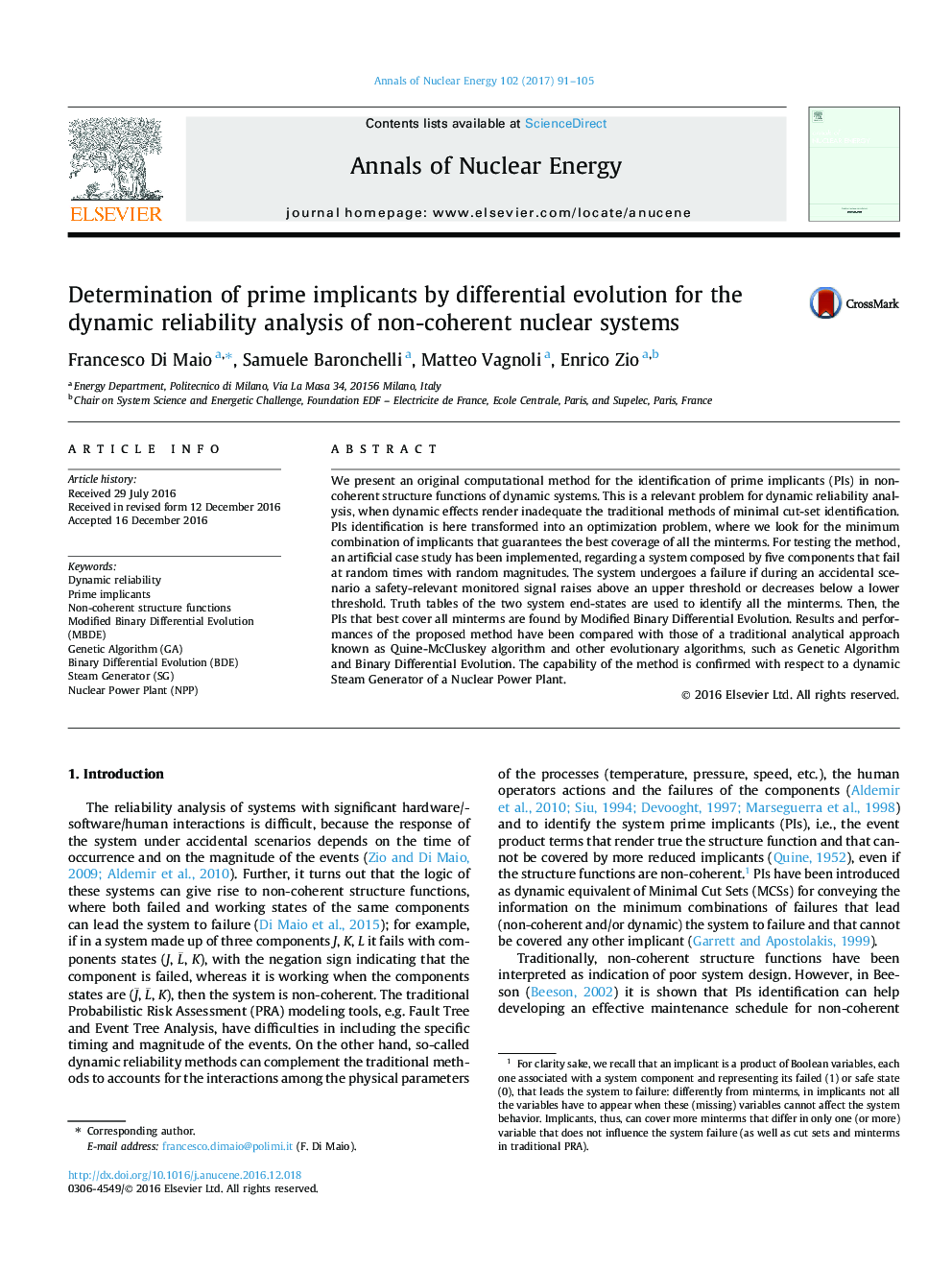| Article ID | Journal | Published Year | Pages | File Type |
|---|---|---|---|---|
| 5475307 | Annals of Nuclear Energy | 2017 | 15 Pages |
Abstract
We present an original computational method for the identification of prime implicants (PIs) in non-coherent structure functions of dynamic systems. This is a relevant problem for dynamic reliability analysis, when dynamic effects render inadequate the traditional methods of minimal cut-set identification. PIs identification is here transformed into an optimization problem, where we look for the minimum combination of implicants that guarantees the best coverage of all the minterms. For testing the method, an artificial case study has been implemented, regarding a system composed by five components that fail at random times with random magnitudes. The system undergoes a failure if during an accidental scenario a safety-relevant monitored signal raises above an upper threshold or decreases below a lower threshold. Truth tables of the two system end-states are used to identify all the minterms. Then, the PIs that best cover all minterms are found by Modified Binary Differential Evolution. Results and performances of the proposed method have been compared with those of a traditional analytical approach known as Quine-McCluskey algorithm and other evolutionary algorithms, such as Genetic Algorithm and Binary Differential Evolution. The capability of the method is confirmed with respect to a dynamic Steam Generator of a Nuclear Power Plant.
Related Topics
Physical Sciences and Engineering
Energy
Energy Engineering and Power Technology
Authors
Francesco Di Maio, Samuele Baronchelli, Matteo Vagnoli, Enrico Zio,
